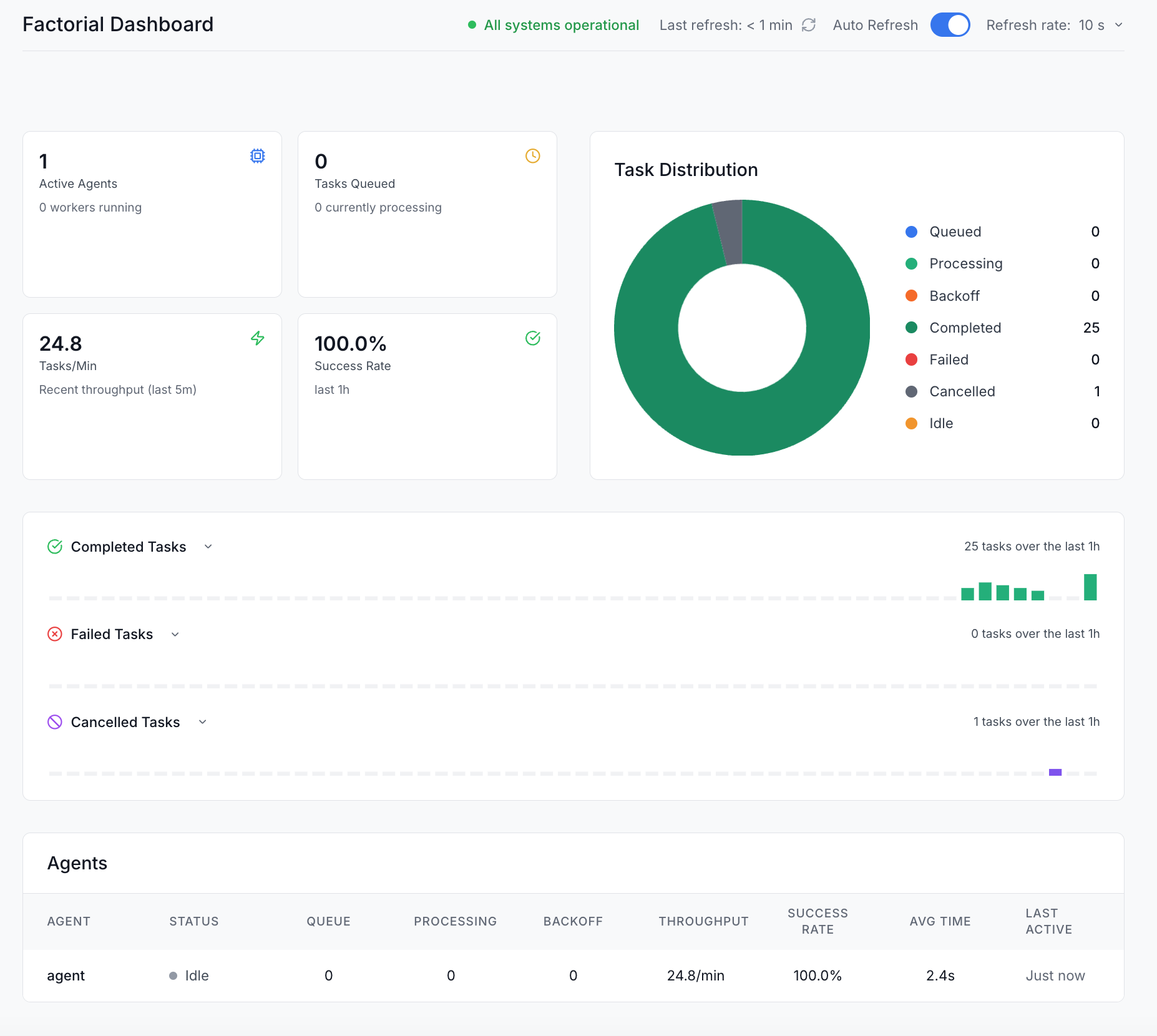Quickstart
Get started with Factorial in minutes.
Installation
pip install nfactorial
Set up Redis
Factorial uses Redis for distributed task management. Run Redis locally:
# Using Docker
docker run -d -p 6379:6379 redis:latest
# Or install locally (macOS)
brew install redis
redis-server
Set your LLM API Keys
Set your OpenAI/xAI/Anthropic API key(s):
export OPENAI_API_KEY=...
export XAI_API_KEY=...
export ANTHROPIC_API_KEY=...
Create your first agent
from factorial import Agent, Orchestrator, AgentWorkerConfig, gpt_41
def get_weather(location: str) -> str:
return f"The weather in {location} is sunny and 72°F"
agent = Agent(
instructions="You help users get weather information.",
model=gpt_41,
tools=[get_weather],
)
# Create orchestrator
orchestrator = Orchestrator(
redis_host="localhost",
redis_port=6379,
redis_db=0,
redis_max_connections=50,
)
orchestrator.register_runner(
agent=agent, agent_worker_config=AgentWorkerConfig(workers=1)
)
# Run the system
if __name__ == "__main__":
orchestrator.run()
Submit a task
In another terminal or script:
import asyncio
from factorial import AgentContext
async def main():
# Create task
context = AgentContext(query="What's the weather in San Francisco?")
task = agent.create_task(owner_id="user123", payload=context)
# Submit to orchestrator
await orchestrator.enqueue_task(agent, task)
# Check status
status = await orchestrator.get_task_status(task.id)
print(f"Task status: {status}")
asyncio.run(main())
View the dashboard
Open http://localhost:8080/observability to see the real-time dashboard with task queues, metrics, and agent performance.
